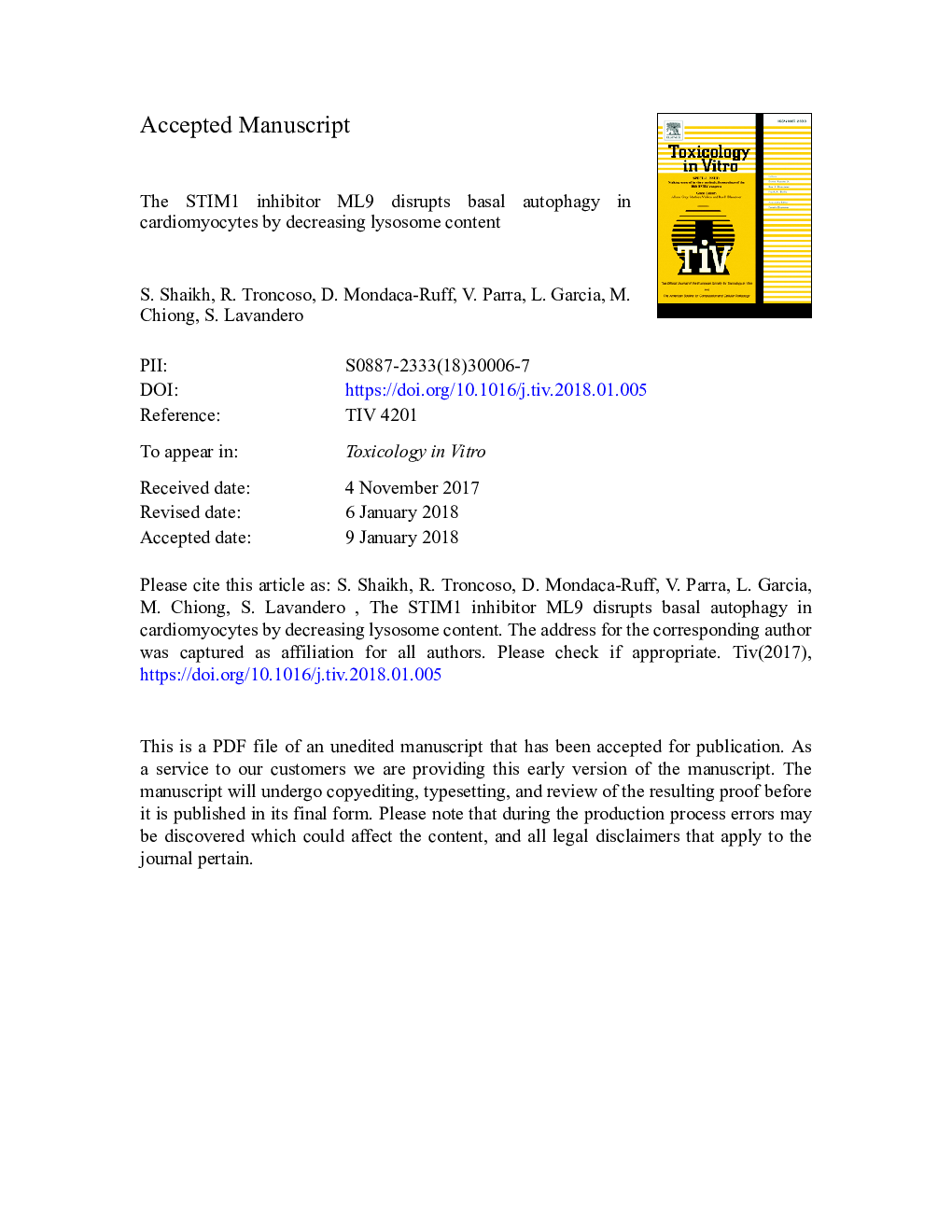| کد مقاله | کد نشریه | سال انتشار | مقاله انگلیسی | نسخه تمام متن |
|---|---|---|---|---|
| 8553906 | 1562697 | 2018 | 27 صفحه PDF | دانلود رایگان |
عنوان انگلیسی مقاله ISI
The STIM1 inhibitor ML9 disrupts basal autophagy in cardiomyocytes by decreasing lysosome content
دانلود مقاله + سفارش ترجمه
دانلود مقاله ISI انگلیسی
رایگان برای ایرانیان
کلمات کلیدی
MTOGFPLC3STIM1SOCEI/R - I / RAutophagy - اتوفاژیischemia/reperfusion - ایسکمی / رپرفیوژنCardiomyocytes - قلب و عروقlactate dehydrogenase - لاکتات دهیدروژناز LDH - لاکتات دهیدروژناز به صورت مختصر شده LDH Lysosomes - لیزوزوم هاCell death - مرگ سلولی Store-operated Ca2+ entry - ورودی Ca2 + ذخیره شدهgreen fluorescent protein - پروتئین فلورسنت سبز
موضوعات مرتبط
علوم زیستی و بیوفناوری
علوم محیط زیست
بهداشت، سم شناسی و جهش زایی
پیش نمایش صفحه اول مقاله

چکیده انگلیسی
Stromal-interaction molecule 1 (STIM1)-mediated store-operated Ca2+ entry (SOCE) plays a key role in mediating cardiomyocyte hypertrophy, both in vitro and in vivo. Moreover, there is growing support for the contribution of SOCE to the Ca2+ overload associated with ischemia/reperfusion injury. Therefore, STIM1 inhibition is proposed as a novel target for controlling both hypertrophy and ischemia/reperfusion-induced Ca2+ overload. Our aim was to evaluate the effect of ML9, a STIM1 inhibitor, on cardiomyocyte viability. ML9 was found to induce cell death in cultured neonatal rat cardiomyocytes. Caspase-3 activation, apoptotic index and release of the necrosis marker lactate dehydrogenase to the extracellular medium were evaluated. ML9-induced cardiomyocyte death was not associated with increased intracellular ROS or decreased ATP levels. Moreover, treatment with ML9 significantly increased levels of the autophagy marker LC3-II, without altering Beclin1 or p62 protein levels. However, treatment with ML9 followed by bafilomycin-A1 did not produce further increases in LC3-II content. Furthermore, treatment with ML9 resulted in decreased LysoTracker® Green staining. Collectively, these data suggest that ML9-induced cardiomyocyte death is triggered by a ML9-dependent disruption of autophagic flux due to lysosomal dysfunction.
ناشر
Database: Elsevier - ScienceDirect (ساینس دایرکت)
Journal: Toxicology in Vitro - Volume 48, April 2018, Pages 121-127
Journal: Toxicology in Vitro - Volume 48, April 2018, Pages 121-127
نویسندگان
S. Shaikh, R. Troncoso, D. Mondaca-Ruff, V. Parra, L. Garcia, M. Chiong, S. Lavandero,